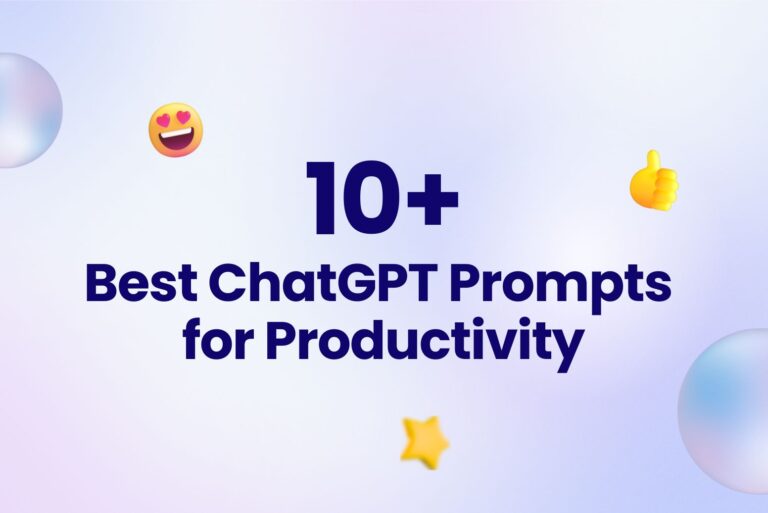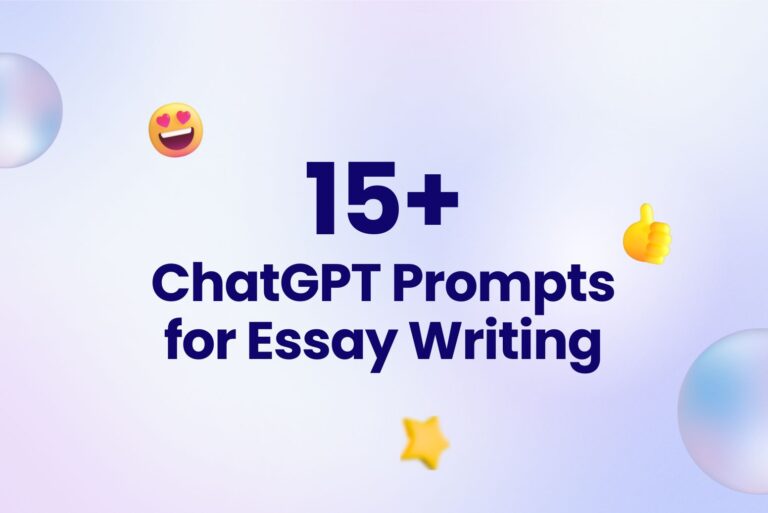60+ Best ChatGPT Prompts for Trading Strategy
Welcome to our blog post! We delve into the world of ChatGPT prompts for Trading Strategy—an invaluable resource for traders seeking intelligent insights. With the rapid advancements in artificial intelligence, we now have at our disposal a cutting-edge tool that can revolutionize the way we approach trading.
These ChatGPT prompts provide traders with a unique opportunity to tap into the vast knowledge and analytical capabilities of AI. By utilizing this technology, traders gain access to a virtual assistant that can assist in making informed decisions, enhancing their trading strategies, and optimizing their investment opportunities.
Arvin, our highly acclaimed alternative to ChatGPT, seamlessly integrates with any website. And it offer users a versatile platform to input prompts and receive exceptional answers. With Arvin, traders can harness the power of AI-driven insights tailored specifically to their needs, further streamlining their trading activities.
The synergy between ChatGPT prompts and trading strategy empowers traders to ask complex questions, analyze market trends, and explore various scenarios—all with the aim of maximizing their profitability. Incorporating ChatGPT prompts into your trading routine can prove to be a game-changer.
Stay tuned as we walk you through the top 60+ ChatGPT prompts for Trading Strategy in our upcoming blog posts. Gain invaluable insights, discover innovative techniques, and unlock the potential of AI-driven strategies to elevate your trading endeavors to new heights.
Remember, the future of trading lies in the fusion of human expertise and the power of AI. And ChatGPT prompt are paving the way for a more intelligent and successful trading landscape. Let’s embark on this exciting journey together!
ChatGPT Prompts for Trading Strategy
- Market Analysis Prompts
- Sentiment Analysis Prompts
- Trading Strategy Development Prompts
- Risk Management Prompts
1. Market Analysis Prompts
Market Data Analysis
- Analyze the price trend of [Ticker Symbol] over the past six months.
- Identify major price movements for [Ticker Symbol] in the last three months.
- Compare the trading volume of [Ticker Symbol] and [Ticker Symbol] over the past year.
- Detect any seasonality patterns in the price of [Commodity Name] over the past five years.
- Assess the correlation between the price of [Ticker Symbol 1] and [Ticker Symbol 2] over the past two years.
- Analyze the intraday price movements of [Ticker Symbol] over the past month.
Fundamental Analysis
- Calculate the price-to-earnings ratio of [Company Name] for the last fiscal year.
- Analyze the revenue growth of [Company Name] over the past five years.
- Compare the debt-to-equity ratios of [Company A] and [Company B].
- Evaluate the impact of the latest GDP report on the [Industry Name] sector.
- Assess the effect of the recent interest rate hike on the bond market.
- Analyze the unemployment rate trend over the past year and its implications on the stock market.
Technical Analysis
- Identify the support and resistance levels for [Ticker Symbol] on the daily chart.
- Analyze the head and shoulders pattern forming on the [Ticker Symbol] chart.
- Evaluate the trend strength of [Ticker Symbol] using moving averages.
- Assess the RSI (Relative Strength Index) of [Ticker Symbol] over the past 14 days.
- Determine if [Ticker Symbol] is exhibiting a bullish or bearish divergence using MACD (Moving Average Convergence Divergence).
- Analyze the Bollinger Bands of [Ticker Symbol] on the weekly chart to identify potential breakout or reversal points.
2. Sentiment Analysis Prompts
Analyzing News Headlines
- Analyze the sentiment of recent news headlines related to [Company Name].
- Summarize the key takeaways from the latest [Industry Name] news articles.
- Assess the market sentiment for [Company Name] based on today’s news headlines.
- Identify the most critical news headlines for [Company Name] in the past week.
- Determine the potential impact of recent headlines on [Ticker Symbol]’s stock price.
- Analyze the sentiment of recent news headlines related to the upcoming Federal Reserve meeting.
Social Media Sentiment Analysis
- Analyze the sentiment of recent tweets mentioning [Company Name].
- Evaluate the public opinion of [Ticker Symbol] based on recent Reddit posts.
- Assess the overall market sentiment based on today’s trending hashtags on Twitter.
- Identify the most discussed stocks on [Social Media Platform] over the past week.
- Determine the sentiment surrounding [Ticker Symbol] based on the latest Instagram posts.
- Evaluate the public’s reaction to [Company Name]’s recent earnings report on social media.
3. Trading Strategy Development Prompts
Creating a Trading Plan
- Develop a set of entry and exit rules for a swing trading strategy using [Ticker Symbol].
- Suggest a simple moving average crossover strategy for trading [Ticker Symbol] on a daily chart.
- Outline a trading plan for [Company Name] using both fundamental and technical analysis.
- Propose a risk management plan for a long-term investment strategy in [Asset Class].
- Develop a performance evaluation framework for a short-term trading strategy.
- Suggest a trading plan for a mean reversion strategy using [Technical Indicator] on [Ticker Symbol].
Backtesting Trading Strategies
- Backtest a moving average crossover strategy for [Ticker Symbol] over the past two years.
- Evaluate the performance of a breakout strategy using Bollinger Bands on [Ticker Symbol] over the past year.
- Assess the effectiveness of a short-term scalping strategy using RSI on [Ticker Symbol].
- Backtest a momentum trading strategy using MACD on [Ticker Symbol] over the past six months.
- Analyze the performance of a contrarian trading strategy using [Technical Indicator] on [Ticker Symbol].
- Evaluate the profitability of a trend-following strategy using [Technical Indicator] on [Ticker Symbol] over the past three years.
Optimizing Trading Strategies
- Optimize the moving average lengths in a crossover strategy for [Ticker Symbol].
- Evaluate the impact of adjusting stop-loss and take-profit levels on a trading strategy for [Ticker Symbol].
- Assess the effect of changing the time frame for a [Technical Indicator] based strategy on [Ticker Symbol].
- Determine the optimal position size for a trading strategy using [Technical Indicator] on [Ticker Symbol].
- Analyze the benefits of using a trailing stop in a trend-following strategy for [Ticker Symbol].
- Investigate the effect of combining multiple technical indicators in a trading strategy for [Ticker Symbol].
4. Risk Management Prompts
Position Sizing
- Calculate the position size for a trade on [Ticker Symbol] with a 2% risk per trade and a $10,000 account balance.
- Determine the optimal position size for a trade on [Ticker Symbol] with a 1% risk per trade and a $25,000 account balance.
- Assess the appropriate position size for a trade on [Ticker Symbol], given a 3% risk per trade and a $50,000 account balance.
- Evaluate the position size for a trade on [Ticker Symbol] with a stop-loss of $1 and a 1.5% risk per trade on a $15,000 account balance.
- Calculate the position size for a trade on [Ticker Symbol] with a 100-pip stop-loss and a 2% risk per trade on a $30,000 Forex account balance.
Stop-Loss and Take-Profit Strategies
- Suggest appropriate stop-loss and take-profit levels for a long trade on [Ticker Symbol] using a risk-reward ratio of 2:1.
- Determine suitable stop-loss and take-profit levels for a short trade on [Ticker Symbol] using a risk-reward ratio of 3:1.
- Evaluate the optimal stop-loss and take-profit levels for a breakout trade on [Ticker Symbol] with a 2.5% risk per trade.
- Propose a trailing stop strategy for a trend-following trade on [Ticker Symbol] with a risk-reward ratio of 1.5:1.
- Assess the ideal stop-loss and take-profit levels for a mean reversion trade on [Ticker Symbol] using a risk-reward ratio of 1:1.
Risk-Reward Ratio Analysis
- Calculate the risk-reward ratio for a trade on [Ticker Symbol] with a stop-loss of $1 and a take-profit of $3.
- Evaluate the risk-reward ratio for a trade on [Ticker Symbol] with a 50-pip stop-loss and a 150-pip take-profit target.
- Analyze the risk-reward ratio for a trade on [Ticker Symbol] with a 2% risk per trade and a potential profit of 5%.
- Determine the optimal risk-reward ratio for a swing trading strategy on [Ticker Symbol].
- Assess the risk-reward ratio for a long-term investment in [Company Name] based on its current valuation and growth prospects.
Embracing ChatGPT prompts for Trading Strategy is a transformative step towards achieving trading excellence. By harnessing the immense potential of AI-driven insights, traders can make more informed decisions, mitigate risks, and capitalize on profitable opportunities.
Stay tuned for our forthcoming blog posts. We will dive deeper into the best ChatGPT prompts for business. And they will empower you to take your trading endeavors to unprecedented heights. Don’t miss out on this chance to revolutionize your trading approach and thrive in today’s dynamic markets.








